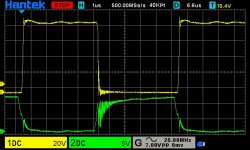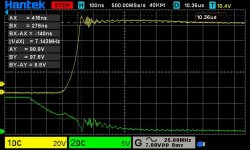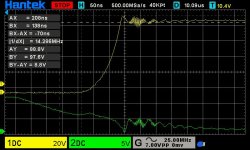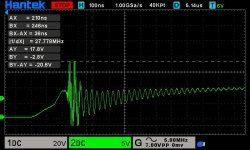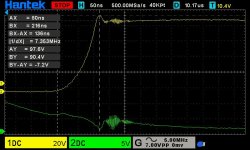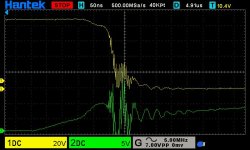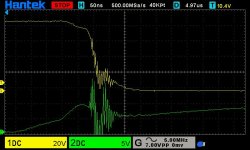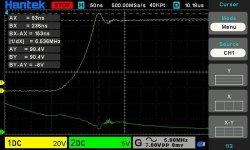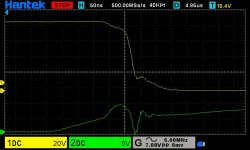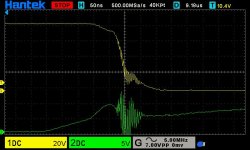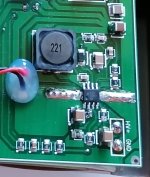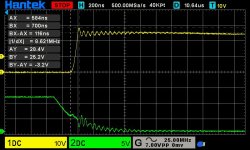mxlemming
100 kW
- Joined
- Jul 17, 2020
- Messages
- 1,125
I wrote a double pulse test routine by just writing 100% duty and every pwm period reading the current on the low side shunt and when it went over my amp request turn it off for one period then back on for one period at low (10%) duty... Then turn all off.
There's no magic to it.
Use V= Ldi/dt to estimate the number of pwm periods.
Run it at low voltage with a current limited PSU to start.
Then batteries with a tiny fuse (like 1/10 the intended pulse size, it shouldn't blow with a<<1ms pulse.
I used a motor as the inductive load because it was already attached. Peters used a coil of thick wire.
There's no magic to it.
Use V= Ldi/dt to estimate the number of pwm periods.
Run it at low voltage with a current limited PSU to start.
Then batteries with a tiny fuse (like 1/10 the intended pulse size, it shouldn't blow with a<<1ms pulse.
I used a motor as the inductive load because it was already attached. Peters used a coil of thick wire.


